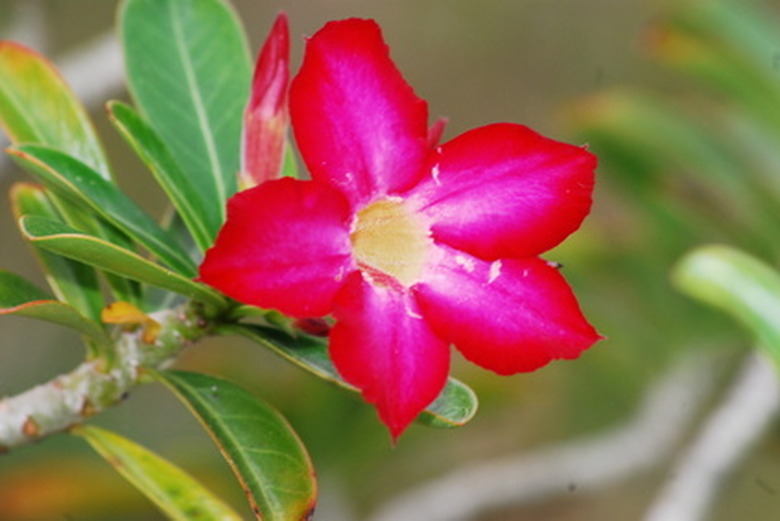Desert Rose Plant Care
The desert rose (Adenium obesum) is a succulent distinctive for its thick, swollen stem, which it uses to store water. Native to tropical Africa, the desert rose thrives in warm, humid climates and has showy, bright pink flowers when in bloom. Because of its need for consistently warm temperatures, Adenium obesum is often grown as a houseplant. Culture of this hardy plant is very simple, but take care when handling the desert rose, as the leaves, seeds, flower and especially sap are all poisonous.
Climate
Desert roses cannot tolerate freezing temperatures and should not be planted in areas where the temperatures often fall below 35 degrees Fahrenheit, according to the University of Florida. For that reason, these plants are often grown in containers so they can be brought indoors when cold weather threatens, or are kept indoors year-round.
Soil and Water
Well-draining soil is a must with these plants. Soggy soil can lead to root or stem rot. A mixture of one part perlite, two parts coarse sand and two parts peat moss makes an excellent planting medium for desert roses. Clay containers or unglazed ceramic pots work best because they allow the soil to dry out quickly, according to information published by the University of Oklahoma. In fact, the soil should be allowed to dry completely before further watering.
- The desert rose (Adenium obesum) is a succulent distinctive for its thick, swollen stem, which it uses to store water.
- For that reason, these plants are often grown in containers so they can be brought indoors when cold weather threatens, or are kept indoors year-round.
Fertilizer
Fertilize your desert rose with a balanced, water-soluble fertilizer (10-10-10). Apply the liquid once per month during the growing season, but use only half the amount recommended on the instructions on the label, as the desert rose has sensitive roots. Over-fertilization can burn the plant's roots. Wet the soil, then apply the fertilizer, then water again.
Light
Desert roses need a full day's worth of sunlight in order to thrive. Six hours is the minimum amount of exposure necessary for blooming, and more is even better. Place the plant near a window that receives bright, but not direct, sunlight. This succulent has delicate leaves that can be burned by the direct rays of the sun. Outdoor plants can be placed where they will receive morning sun followed by dappled or otherwise filtered afternoon shade in hot climates, or day-long full sun in cooler climates.
- Fertilize your desert rose with a balanced, water-soluble fertilizer (10-10-10).
- Apply the liquid once per month during the growing season, but use only half the amount recommended on the instructions on the label, as the desert rose has sensitive roots.
Problems
There are no insect pests that pose a serious problem to this plant, according to the University of Florida. Still, monitor your desert rose for common insects such as spider mites and whiteflies. Rinse them off your plant with a strong stream of water, or apply an insecticidal oil to the desert rose. Prevent fungal diseases by making sure your plant has good air circulation around it and does not have wet soil.
